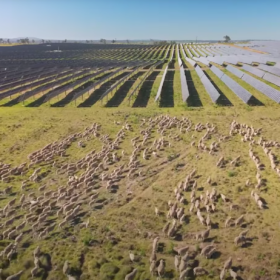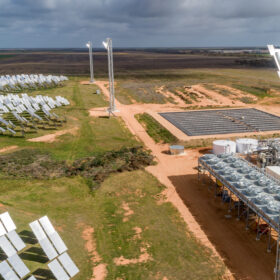Take China for example, PV InfoLink reports that share of bifacial modules has increased from 2% in 2017 to 10% in 2018, driven by China’s Top Runner program, which incentivizes high efficiency solar technologies.
Among those Tier1 manufactures, JinkoSolar is not the first one dipping into bifacial, but the first one commercializing bifacial with transparent backsheets ,Swan. What are their considerations?
Reporter: All leading manufacturers are developing glass-glass bifacial modules, why is JinkoSolar promoting the use of transparent backsheet?
Dany Qian: Frameless double-glass modules field failure is not uncommon. Bowing or deformation in frameless, dual glass modules were occasionally reported, causing the cells to crack and the glass to break. But framed double glass is too heavy, resulting in higher EPC and O&M costs substantially. The increased cost on logistic, freight, labor, plus additional burden on mounting structure offsets the benefits of generation enhancement. While JinkoSolar’s Swan bifacial with transparent backsheet provides a 25% less weight alternative, resulting in 20% reduction of labor cost. What historically was a two man lift may require three men resulting in greater labor costs. Compared with Swan, conventional double glass bifacial requires trackers to be stronger and piles to be deeper, which leads to 15% more mounts costs and 5% more O&M cost.
Reporter: Will the bifacial module height off the ground lead to higher BOS costs?
Dany Qian: If compared with bifacial dual glass, Swan bifacial with transparent backsheet is proved to reduce approximately 3% BOS costs.
Reporter: Glass/glass modules are known to have offgassing issues, how does Swan overcome it? :
Dany Qian: Swan series using Tedlar PFV film-based backsheet has an acetic acid diffusion rate of 30mg/m2/day1, sufficient to bring the concentration down substantially to prevent corrosion and power loss. This breathable design that releases moisture and acetic acid, preventing encapsulant degradation while reducing the risk of delamination and corrosion.
Reporter: Customers sometimes point out that when you go for the conventional bifacial, the front side becomes less efficient as a 400W panel may step down to 390W for example. How does Swan overcome it?
Dany Qian: Swan bifacial provides meshed transparent backsheet option, which can increase the second reflection from gap between cell/cell and cell and can achieve the power almost the same as mono-facial module
Reporter: Does bifacial require a bit more land than mono-facial with wider array spacing to allow more light to the back?
Dany Qian: GCR means the distance between arrays. Land cost is one of the key factor when do initial system investment assessment, considering about the low irradiance (135W/m2 defined by TUV Rhein when define module integrity power) absorbed by rear side, GCR design is much related to the front side shading consideration. As to certain project module capacity, when we do the system design, both front and rear side module power shall be considered, else will beyond the initial system capacity. Therefore, bifacial module efficiency (total power output) will be higher than mono-facial module, then actually less land required. If under same module quantity condition, land area is same while project yield will be more.






By submitting this form you agree to pv magazine using your data for the purposes of publishing your comment.
Your personal data will only be disclosed or otherwise transmitted to third parties for the purposes of spam filtering or if this is necessary for technical maintenance of the website. Any other transfer to third parties will not take place unless this is justified on the basis of applicable data protection regulations or if pv magazine is legally obliged to do so.
You may revoke this consent at any time with effect for the future, in which case your personal data will be deleted immediately. Otherwise, your data will be deleted if pv magazine has processed your request or the purpose of data storage is fulfilled.
Further information on data privacy can be found in our Data Protection Policy.